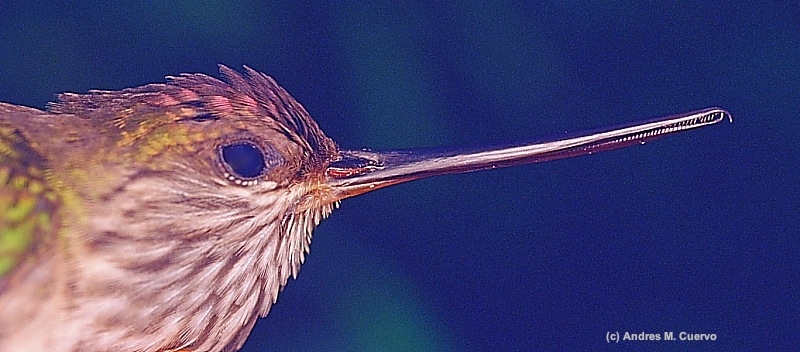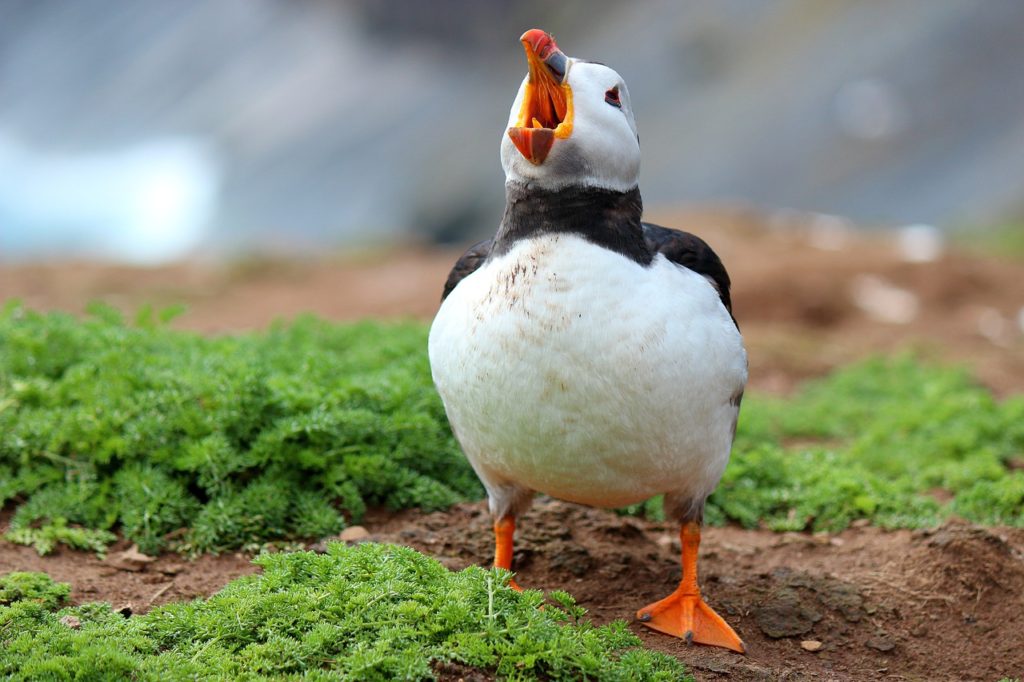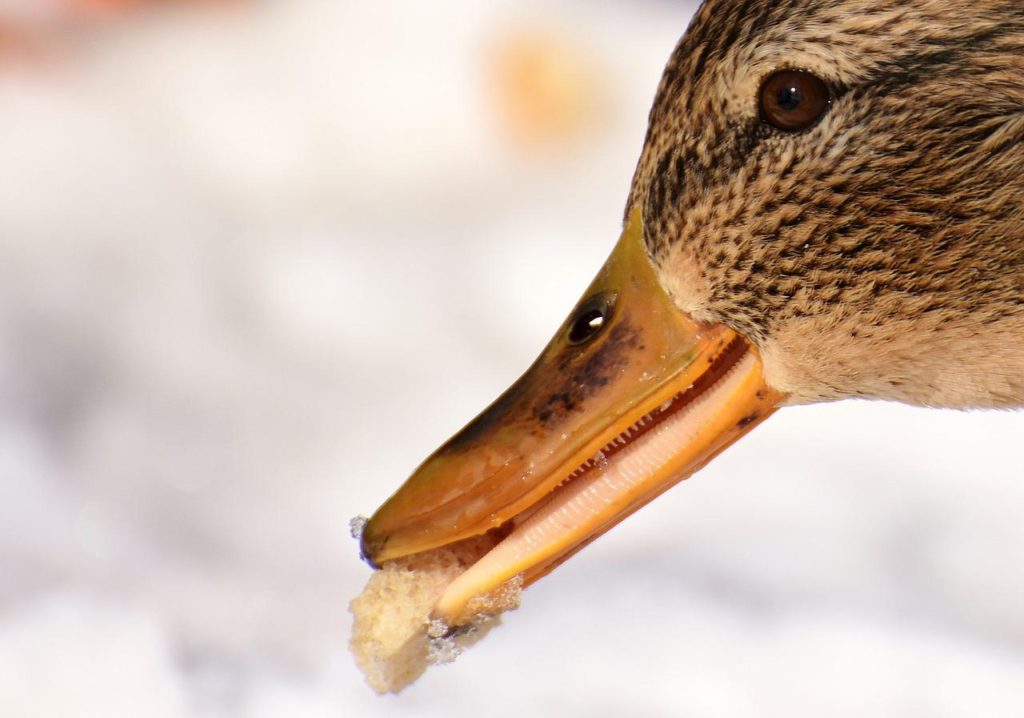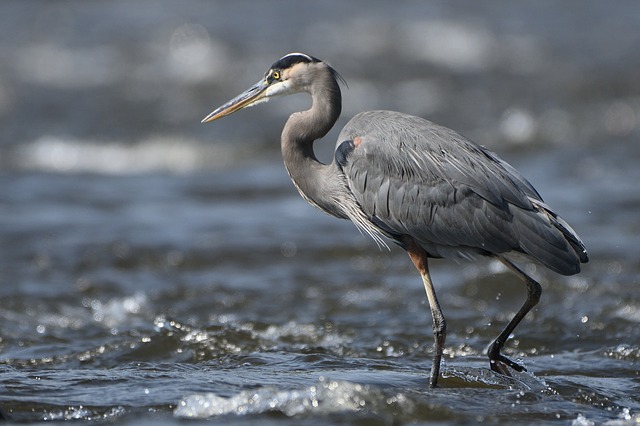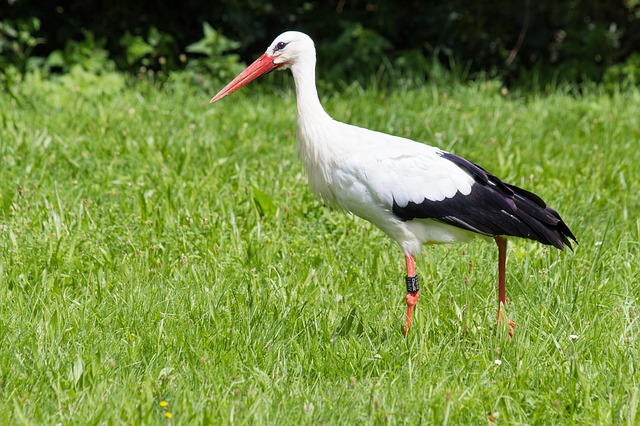
Birds do not have teeth. However, there are quite a few that really look like they do! These birds have evolved special beaks which help them to perform important functions. So here are some of the most amazing birds with “teeth,” and what you’ll want to know about them.
Toucan
Toucans have large beaks that depending on the species can be more than half of their entire total length. Their huge beaks have forward-facing serrations that look like teeth. And because of this, it was originally believed they were mostly carnivorous and ate fish.
However, while they do eat insects, eggs, and the nestlings of other birds, toucans mainly eat fruit. Their long beaks allow them to grab fruit on faraway branches and those jagged tooth-like serrations help them to peel it.
Greylag Goose
This large gray goose species is the ancestor of most breeds of domestic geese. While they may look scary, the pointy serrations on their beaks actually function to help the geese to uproot and tear up grass. The serrations are known as tomia and are made of cartilage.
When their beaks are open, greylag geese also appear to be birds with teeth on their tongues! That’s because, on their tongues, they have spiny papillae which are sharper yet not as hard as the tomia on their beaks. Their spiny tongues help them to shred and maneuver their food before swallowing it.
Canada Goose
This recognizable and common goose species has tomia running down the sides of its beak to help it to grip and cut vegetation. These tooth-like projections also help it to filter feed and even crush its food.
Canada geese are actually considered to be pests in many areas because flocks will often feed on grass and make quite a mess with the waste they produce. Golf courses, public parks, swimming pools, and docks are some of the most common places these toothy birds can be a nuisance.
Tooth-Billed Pigeon
Despite being the national bird of Samoa, this is not a bird you’re likely to see. That’s because due to overhunting and habitat loss the tooth-billed pigeon is nearly extinct.
Like other birds with teeth, the tooth-billed pigeon actually has a specially adapted beak. Its unique orange-colored beak has a jagged tip which it used to saw through tough seeds. Because it is closely related to the extinct dodo bird, the tooth-billed pigeon is also known as the “little dodo”.
Totodu74/Wikimedia Commons/CC BY-SA 3.0
Tooth-Billed Hummingbird
The fast-flying tooth-billed hummingbird is quite large for a hummingbird species, and it has a very long and straight beak. Males have a small hook at the tip of their beaks and even more prominent tooth-looking serrations than females.
They also have brighter plumage than the females as well. In addition to feeding on nectar from flowers, the tooth-billed hummingbird’s long serrated beak helps it to catch small insects and spiders.
Andres Cuervo/Wikimedia Commons/CC BY-SA 2.0
Puffin
Puffins are stocky birds with short wings, a large beak, and mostly black or black and white plumage. These seabirds are known for holding large numbers of fish crosswise in their beaks while hunting for more. One reason they are able to accomplish this is that they have jaws that come together in a parallel manner and exert equal amounts of pressure along the entire length of the beak.
Another is that inside their beaks they have tooth-looking spines called denticles. The denticles point towards their throat And by pushing the fish against their denticles with their tongues, puffins can swim underwater and catch multiple fish without losing their grip on the fish they are already holding.
Seagull
If you were to see a seagull open its beak wide enough you’d probably think that these are birds with teeth. That’s because similar to puffins, they also have denticles to help them hold onto their food.
These omnivores are adaptable and opportunistic feeders and will eat just about anything from fish to garbage. And because seagulls can actually unhinge their jaws, it allows them to get even the largest of meals down their gullet.
Tooth-Billed Bowerbird
This species is also called the tooth-billed catbird. And it gets the “tooth-billed,” in both of these names because of its notched tooth-like beak. These notches help it to cut young leaves which along with fruit make up the majority of its diet.
Male tooth-billed bowerbirds also use the notches in their beaks to gnaw through the stems of leaves that they use for a very important purpose, their mating ritual. They collect the leaves and then manipulate them into a decorative stage with the pale underside of the leaves facing up to attract a mate.
Francesco Veronesi/Wikimedia Commons/CC BY-SA 2.0
Mallard
You don’t have to go far to see birds with teeth. A trip to the local duck pond will often do because even mallards have toothy-looking beaks.
That’s right if you look closely mallards along with most other types of ducks have lamellae, comb-like projections that run down the sides of their beaks. The lamellae are actually part of the beak and function to strain small pieces of plant matter and other food items from the water just like a filter.
Merganser
Different from other types of ducks, mergansers don’t have lamellae. That’s because they eat fish. So instead they have thin, sharp, serrated beaks. The intimidating serrations help to grasp the fish and ensure that they don’t escape. These are diving ducks that hunt fish below the surface of the water. For this reason, they are also commonly called “fish ducks”.
Archaeopteryx
These were prehistoric birds with teeth, real teeth. Archaeopteryx is considered to be the first bird and therefore represents the transitional form from reptiles to birds.
In addition to a full set of real teeth, this species had feathers, 3 claws on each wing, and a mixture of bird-like and reptilian features. It is believed that it was possibly able to glide or even fly. Archaeopteryx lived around 150 million years ago and was about the size of a common raven.
Start Shopping for Birding Supplies!
Raccoon Pictures
Raccoons are easily recognizable by their black face mask and ringed tail. And there are many fascinating things about this intelligent nocturnal species. So we’ve compiled some of the best raccoon pictures to show you just how amazing and unique they are. Raccoon...
Eagle Pictures
Eagles are large powerful raptors with sharp talons and beaks. These apex predators are typically at top of the food chain and there are many interesting things about them. So we’ve compiled some of the best eagle pictures to show you just how amazing they are. Bald...
Nutria Pictures
Nutria are large semi-aquatic rodents from South America. In the United States where they were originally imported for the fur industry, they are an invasive species. Despite their pest status, there are many interesting things about them. So here are some of the best...
Stork Pictures
Storks are tall wading birds with long legs and necks. These amazing birds have many fascinating things about them. And we’ve compiled some of the top stork pictures to help show you just how interesting and beautiful they are. White Stork The white stork has a body...
Alligator Pictures
The American alligator is a large predatory reptile that inhabits the southeastern United States. It’s a fascinating animal with many interesting things about it. And we’ve collected some of the best alligator pictures to help show you just how amazing they are....
How Long Do Great Blue Herons Live?
The life expectancy of birds is known to be closely related to their size. So as the biggest heron species in North America, how long do great blue herons live? The average life expectancy for these large birds is around fifteen years. However, surviving their first...
Where Do Great Blue Herons Live?
The great blue heron is considered to be the most widespread heron in North America. So exactly where do great blue herons live? Here’s what you’ll want to know. Great Blue Heron Range The great blue heron is found throughout most of the North American continent. In...
Where Do Great Blue Herons Nest?
While many of us have seen great blue herons their nesting habits often remain a mystery to most people. That’s because they purposely nest in hard-to-reach places. So where do great blue herons nest? Here’s the answer. A Colony Nester Typically great blue herons nest...
Do Great Blue Herons Migrate?
Do great blue herons migrate? This is something many people wonder about, especially if they’ve seen a heron during the cold winter months. And the answer is both yes and no. Here’s what you’ll want to know. Great Blue Heron Range The great blue heron has a large...
Great Blue Heron Pictures
Few species of birds are as tall, elegant, and attractive as the great blue heron. So we’ve compiled some of the best great blue heron pictures for you to admire and help you to learn more about this amazing bird! Great Blue Heron Head The head of the great blue heron...
What Do Snapping Turtles Eat?
Many people are familiar with the fact that snapping turtles have an incredibly strong bite. They use their strong jaws and sharp beak not just for defense but also for catching food. So what do snapping turtles eat? Here's what you'll want to know. Snapping turtles...
Birds That Look Like Egrets
Egrets are predatory birds that hunt and live in a range of both freshwater and saltwater habitats. These birds are usually white, and have S-shaped necks, long legs, and dagger-like beaks. However, they are often mistaken for several other types of birds that look...
Birds That Look Like Storks
Storks are large wading birds with robust bills and long legs. These tall carnivorous birds are well-known for their wide wingspans and also for building huge nests. However, they are often confused with several other bird types that have a similar appearance. So...
Birds That Look Like Herons
Herons are tall birds with long slender legs and necks. And they often wade in the water when hunting for food. Yet there are several other types of birds that may be mistaken for them. To make things more confusing many of these birds also spend time in the water and...
Great Blue Heron Facts
The great blue heron is named for its size and the grey-blue color on its wings, stomach, and back. This species has many fascinating things about it. So here are the top great blue heron facts. It's The Largest North American Heron The great blue heron is a big bird...
Are There White Herons?
Are there white herons? This is something many people wonder especially after seeing a tall all-white bird. The answer is yes! And here’s a fast introduction to them. A White Color Morph Most people are familiar with the great blue heron, a large predatory and...
Great White Heron Facts
While many people are familiar with the great blue heron, they are often surprised to find out that there’s also a great white heron. There are many things you’ll want to know about this stunning bird. So here are the top great white heron facts. The Great White Heron...
What Animals Eat Herons?
Because of their size and long sharp beaks, it can be hard to imagine that herons have any natural predators. While they do, they definitely don’t have nearly as many predators as most other types of birds. So what animals eat herons? Predators Of Adult Herons For...
What Do Herons Eat?
Great blue herons are often seen slowly wading in shallow water hunting for food. You may have even spotted one of these large birds in your own backyard pond. This leaves many people wondering: “What do great blue herons eat?” And here’s everything you’ll need to...
What Do Green Herons Eat?
The green heron is a secretive and small heron species. What it lacks in size however it makes up for in intelligence. It is particularly well-known for how it uses its smarts when hunting for food. So what do green herons eat? Read on to find out. Meet The Green...




